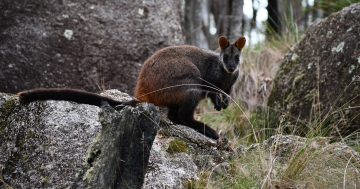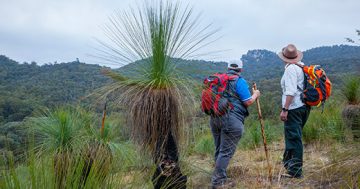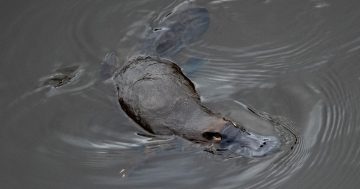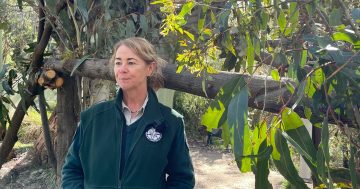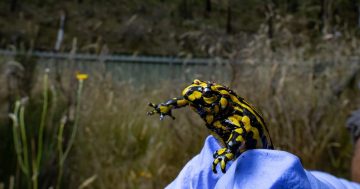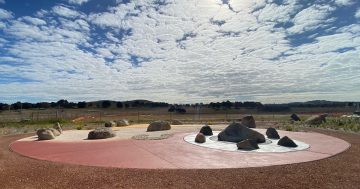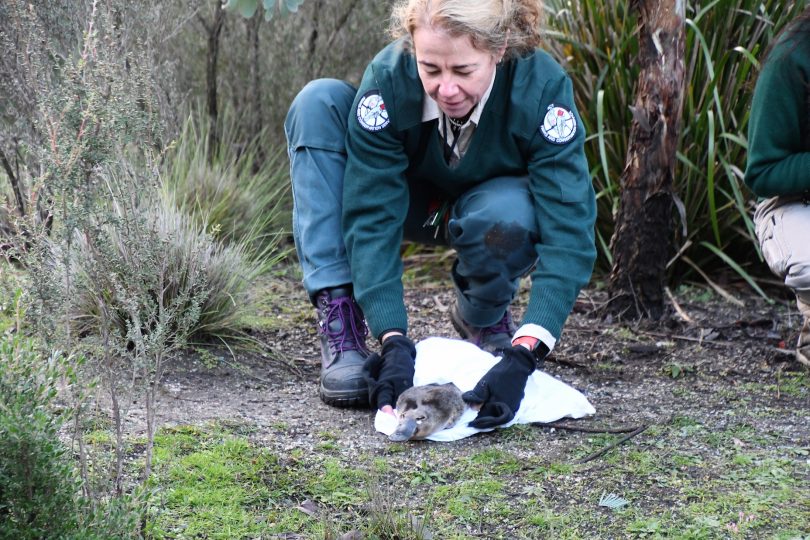
Rescue team member Dr Sarah May from ACT Parks and Conservation releasing one of the platypus. Photos: Supplied.
Three platypuses have returned to their natural home at Tidbinbilla Nature Reserve after a ‘holiday’ at Taronga Zoo in Sydney.
Seven of the egg-laying mammals had to be rescued from an almost dry pond during the summer’s bushfire season after rangers feared their home would be completely dry within weeks.
The remaining platypuses will be released in the coming weeks.
Now there has been sufficient rainfall in the area, the rescue effort has allowed the animals to be returned to their sanctuary which is designed to keep out predators.
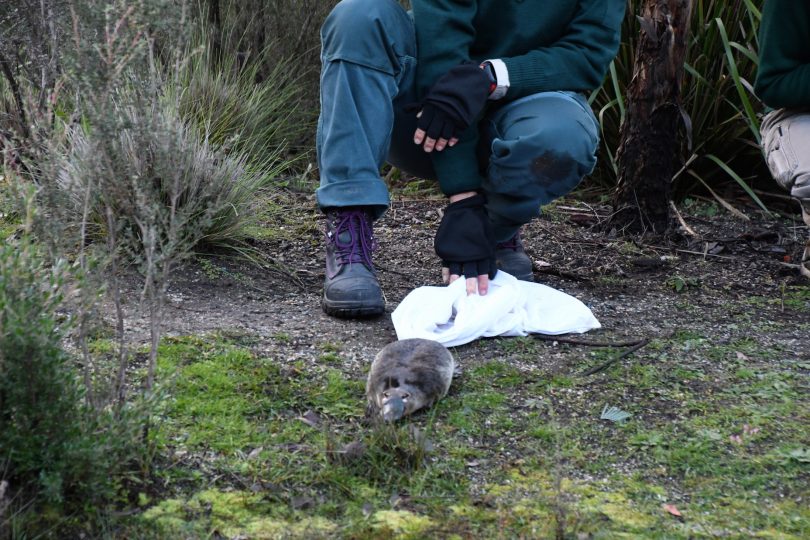
Heading home: a Tidbinbilla playtpus returns to its natural habitat. Photos: Supplied.
Taronga’s Manager of Conservation and Recovery Programs Andrew Elphinstone said there was real anxiety about whether the platypuses would have perished in the worsening conditions.
“With an ever-decreasing water body comes the reduction in resources, including food. It was feared there were not enough prey items to support the platypus population,” he said.
The rescue mission also helped kick off a new study partnership examining the risks of extinction for the first time.
The study estimated that under current climate conditions, and due to land clearing and habitat fragmentation by dams, platypus numbers had almost halved since European colonisation, leading to the extinction of local populations across about 40 per cent of the species’ range.
ACT Minister for Environment and Heritage Mick Gentleman said Tidbinbilla Nature Reserve, Taronga Zoo and UNSW had teamed up on a research project to better understand the movements and behaviours of these elusive creatures.
“We are extremely grateful to Taronga Zoo and UNSW for helping Tidbinbilla staff evacuate platypus from the Reserve’s water-depleted ponds late last year and I’m pleased to see this working partnership continue,” Mr Gentleman said.
“Recent rainfall has since filled the waterways and ponds at the Reserve and the platypus can now return to thrive in their natural environment.”
Mr Gentleman said the platypus were tagged with tracking devices during their stay at Taronga Zoo.
“It’s great to see Tidbinbilla, Taronga and UNSW turning this summer’s devastating weather events into a significant opportunity for collaboration and research.
“I thank our partners for working with Tidbinbilla’s wildlife officers and caring for these iconic Australian animals over summer while the nature reserve experienced extended dry conditions and the threat from fire.”
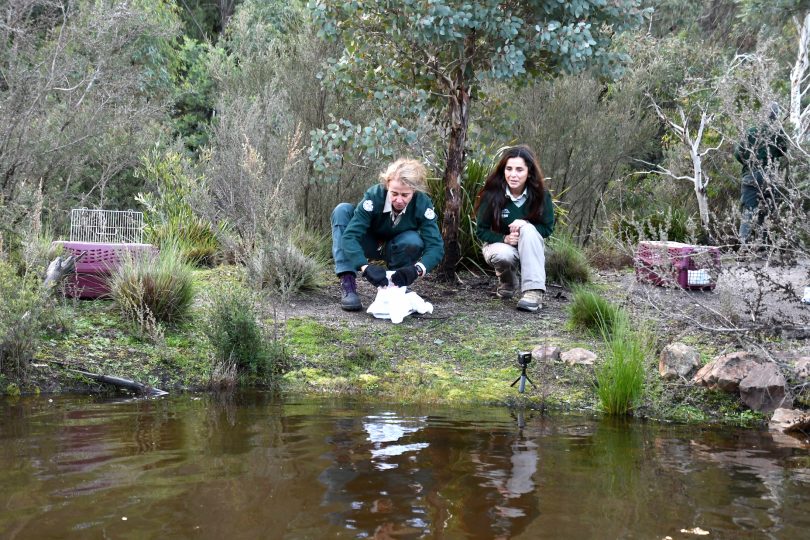
The platypus were released at Tidbinbilla Nature Reserve by ACT Parks and Conservation staff.
Tidbinbilla veterinarian Dr Arianne Lowe joined Taronga’s head veterinarian Dr Larry Vogelnest and UNSW’s scientist Dr Gilad Bino for the procedure to release the platypuses.
“The tracking project will provide never before studied insights into the habitat use, behaviour, and interactions of platypuses over an extensive time period [1.5 years],” Dr Bino said.
“Findings are anticipated to improve understanding of platypus habitat requirements not only specifically for Tidbinbilla Nature Reserve but also for the management of wild populations of platypus.”
Taronga Wildlife Conservation Officer Dr Phoebe Meagher said they were thrilled to be able to release the first three animals back to their home within the Reserve.
“Increasingly, Taronga is being called upon to assist in these kinds of rescue missions because of our extensive experience in wild animal care and management and our commitment to conserving wildlife,” Dr Meagher said.
“During their stay at Taronga, our platypus keepers went above and beyond to keep these animals healthy and to ensure they kept their natural behaviours.
“They achieved this by limiting their contact with the Tidbinbilla platypus, supplying live food for active foraging and keeping them separate from Taronga’s own animals,” Dr Meagher said.
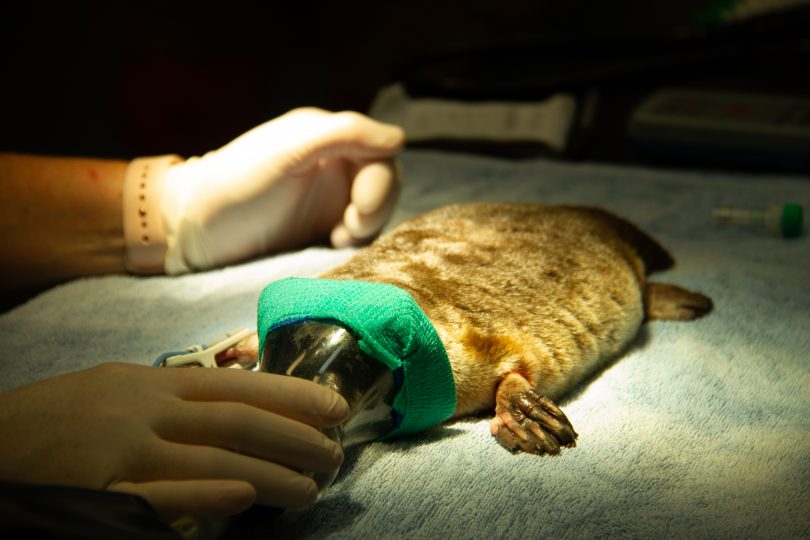
One of the platypuses undergoes health check at Taronga Wildlife Hospital.
Mr Gentleman said Tidbinbilla and other parks throughout the Canberra region were continuing to recover from a very challenging summer.
“Tidbinbilla Nature Reserve remains closed for public safety in response to COVID-19 and we are also working to repair damage from bushfire and floods. We are looking forward to being able to welcome visitors back to the reserve to see the platypus later in the year,” he said.
Further information on ACT’s park and reserve closures, including Tidbinbilla Nature Reserve, is on the ACT Government’s environment website.













